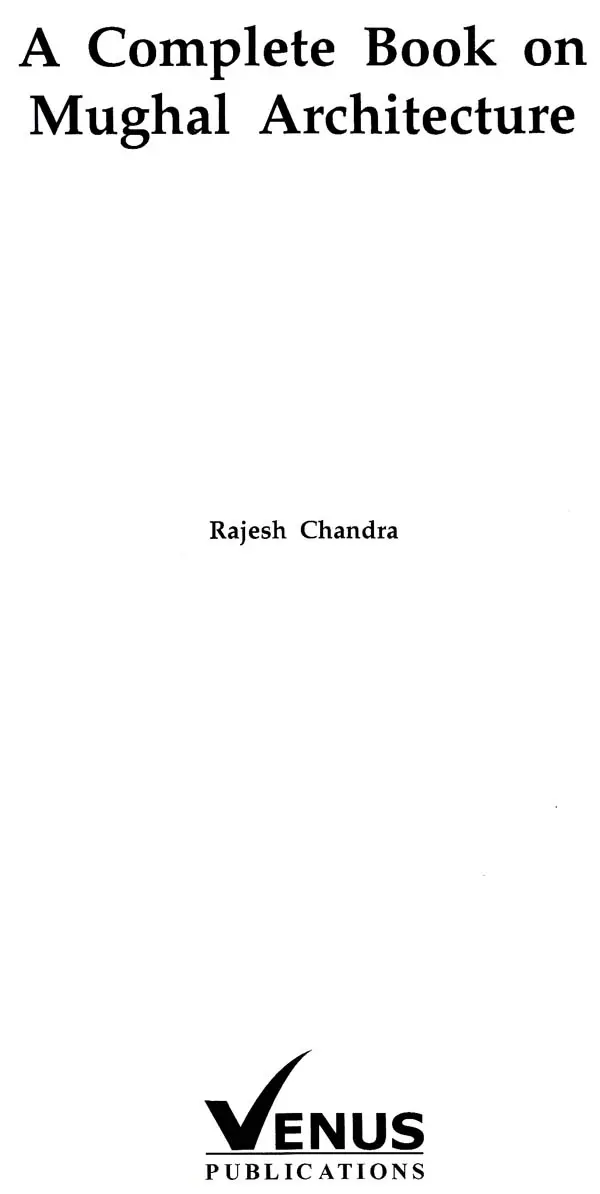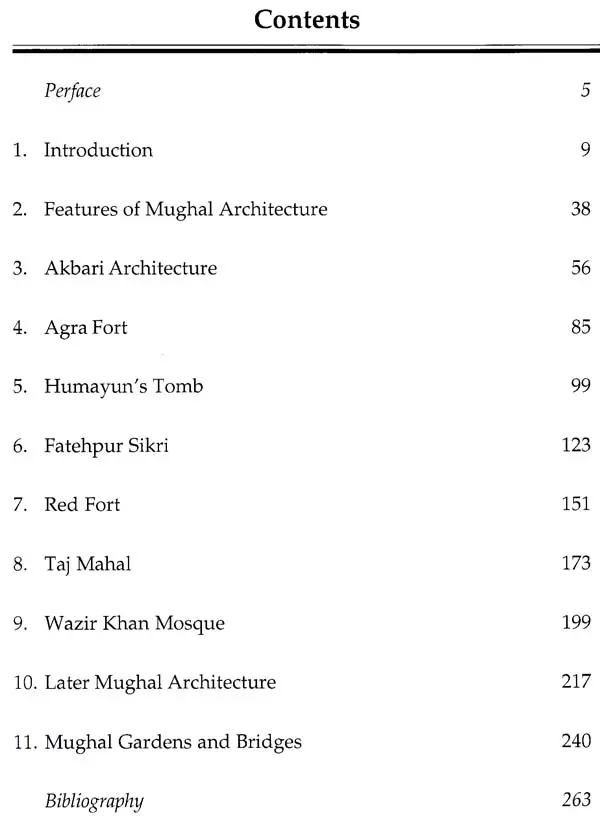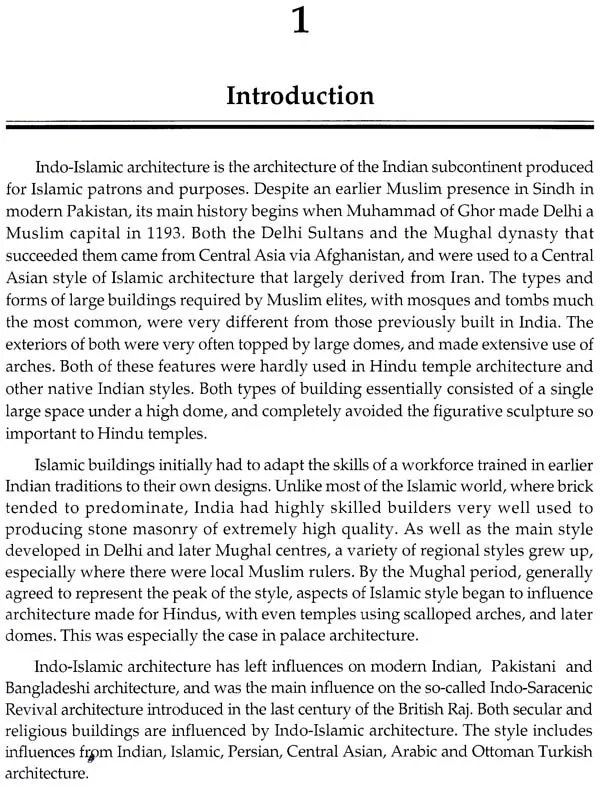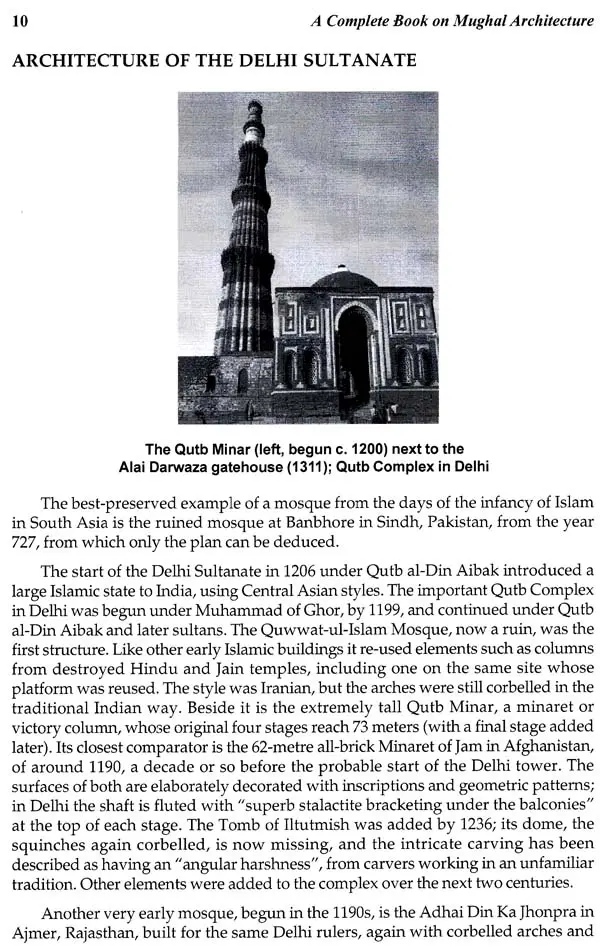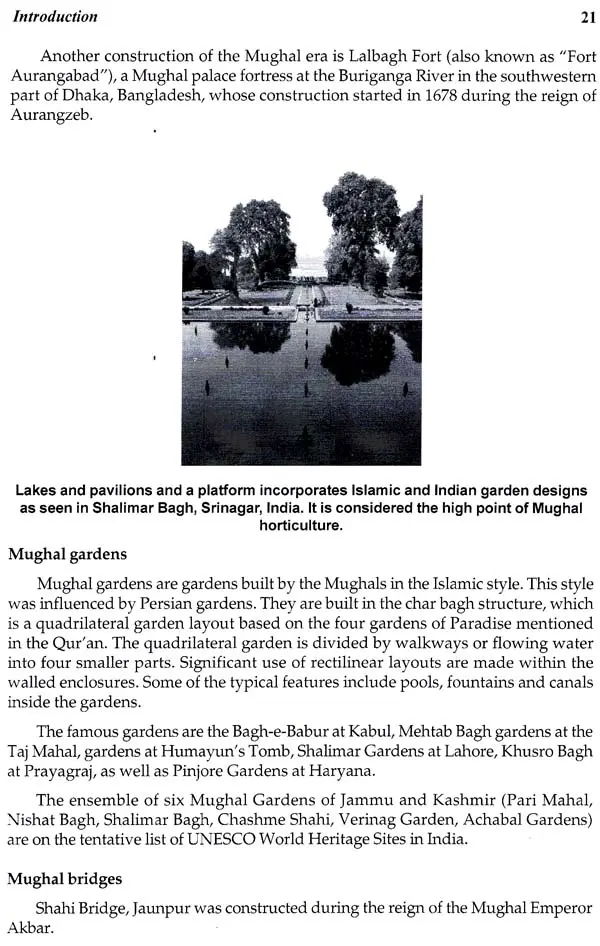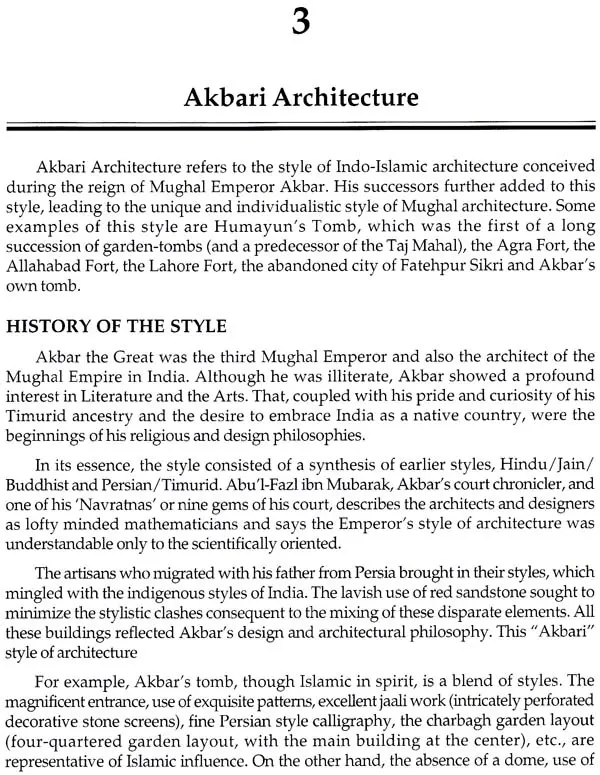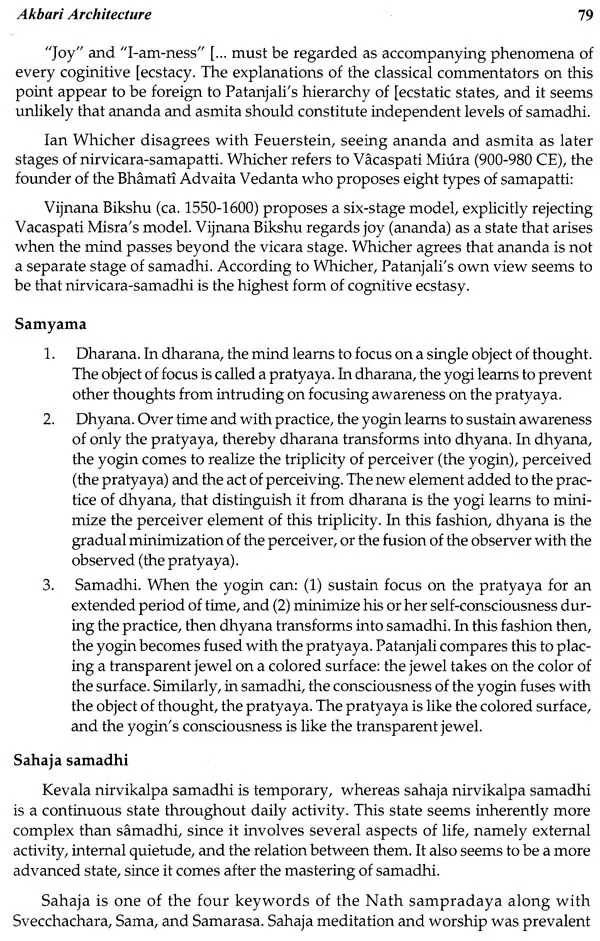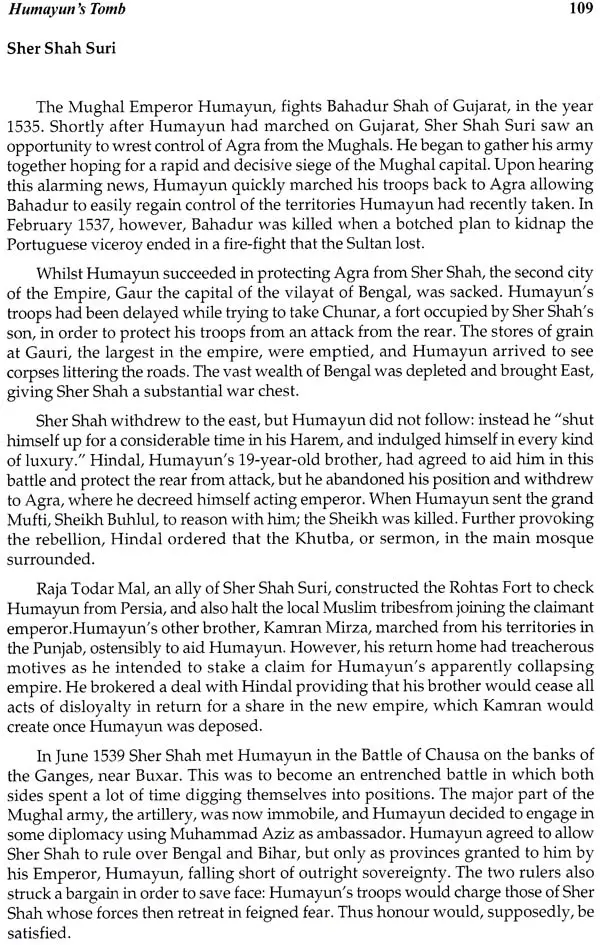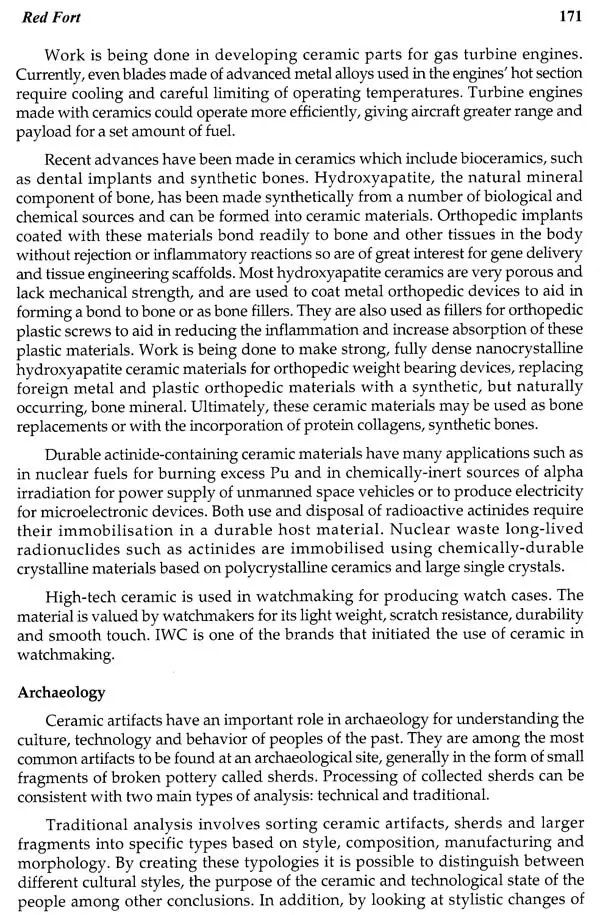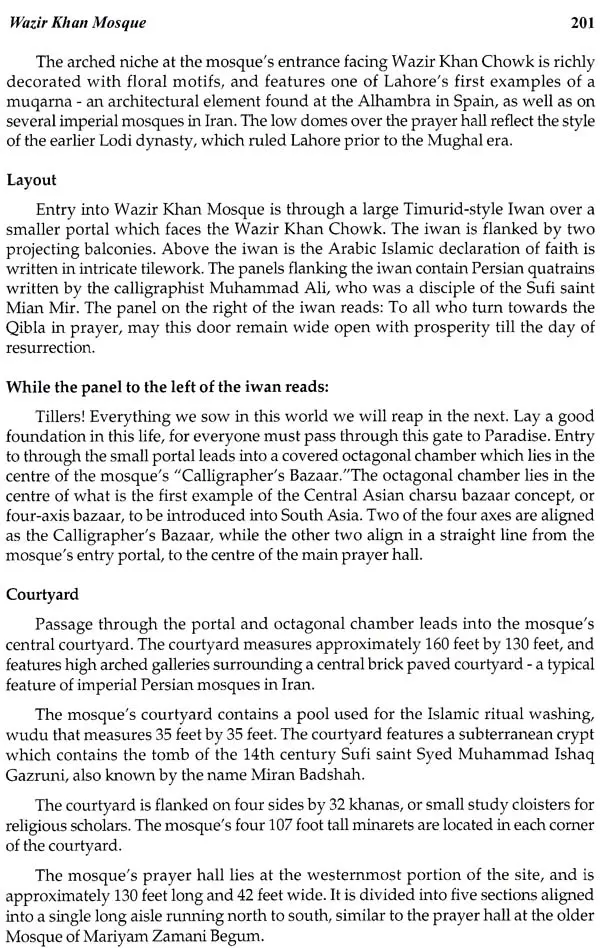
A Complete Book on Mughal Architecture
Book Specification
| Item Code: | UAR250 |
| Author: | Rajesh Chandra |
| Publisher: | Venus Publications, Delhi |
| Language: | English |
| Edition: | 2019 |
| ISBN: | 9789387851009 |
| Pages: | 264 |
| Cover: | HARDCOVER |
| Other Details | 9.50 X 6.50 inch |
| Weight | 540 gm |
Book Description
The Mughals carried this tradition and created a synthesis of the pre Turkish technique, viz., trabeate with the arcuate. The final result, however, of all this blending was the emergence of a distinct style of their own. Babur did not have enough to devote to big architectural projects.
Rajesh Chandra has worked as a Professor of Medieval Indian History and Dean of Social Sciences in Prestigious University. He is also serving as the Secretary General of the many organisations. His works have been published in many books and journals.
The foundation of a new style of architecture in India had already been laid in the 13th century with the introduction of the arcuatetechnique where spaces were covered with domes and entrance were made with the help of arches. The Mughals carried this tradition and created a synthesis of the pre-Turkish technique, viz., trabeate with the arcuate. The final result, however, of all this blending was the emergence of a distinct style of their own. Babur did not have enough to devote to big architectural projects. He, unevenlieless, laid out several gardens in India on the pattern of his culture-area. Humayun, Babur's successor, was plagued by continuously eroding political authority. Within a decade of his assuming power, he was dethroned and sent into exile in Persia. The buildings dating from this period, therefore, do not show any distinctiveness. Humyun survived for only one year after his return to India in 1555.However, the impact of a long contact with the Persian culture can be seen in the designing and execution of his Mausoleum under the supervi sion of his wife Hamida Banu Begum. The flowering of the Mughal architecture in reality took place uhder Akbar. He encouraged a hybrid style, containing foreign as well as indigenous element. Akbar particularly appreciated the resources of the indigenous artisans and got them translated in the buildings of Fatehpur Sikri. Akbar's son Jahangir was not a notable builder, but Jahangir's son Shah Jahan was one of the greatest builder in medeival India. Some of India's finest monumental heritage dates from Shah Jahan's reign.Marble replaced red sandstone as the principal building material, and the decorative art of inlaying achieved distinction with the introduction of semiprecious stones as inlay material, called pietra dura (prachin kari). Shah Jahan also introduced the bulbous domes and convoluted arches in his buildings.Aurangzeb's temperament did not respond to the style prevailing from his father's reign. His buildings, therefore, show a change. They are austere in both material and style.
**Contents and Sample Pages**
